
From sweet to salty, survey investigates Japan’s favorite shime treats.
In Japanese, breakfast, lunch, and dinner are asagohan, hirugohan, and bangohan. But there’s also an occasional quasi fourth meal of the day: shime.
Shime literally means the close, end, or finish of something, and it’s often applied to capping off a night of drinking by grabbing a quick bite to eat before going home. You could argue, and convincingly, that it’s the most important meal of the day, so what are Japan’s favorite shime foods?
To find out, Japanese restaurant website Hot Pepper conducted a survey with 1,035 users between the ages of 20 and 69. When asked if they usually want to eat shime after going out for deinks, 37.2 percent said yes, and another 22.8 said they don’t have any pre-set for-or-against stance on going for shime before going home.
Hot Pepper then asked survey participants to pick their top three personal favorite shime options, giving three points to their top pick, two points to their second, and one point to their number-three. Then they added everything up, producing the top 10 list here.
10. Udon (127 points)
9. Sherbet (144 points)
8. Onigiri/rice balls (146 points)
7. Soba (159 points)
6. Cake (182 points)
It’s a mix of starchy and sweet foods in this block, with udon and soba noodles (made from wheat and buckwheat, respectively) showing up. Neither is particularly heavy, so they’ll keep a growling stomach from waking you up in the middle of the night and they’re both pretty cheap too, so you should have enough yen left over for a bowl even if you were knocking back drinks in a pricy bar just beforehand. All of those nice things apply to onigiri too, with an additional bonus in that you can grab some to go at any of Japan’s open-24-hours convenience stores (although their already somewhat tricky packaging can be even more of a challenge to open neatly if you’re buzzed).
On the sweet side, sherbet is another easy-to-grab-at-the-convenience store choice, and a refreshing way to end the night if you jus got out a stuffy, sweaty bar or are simply feeling flushed from one too many cocktails. And if we had to hazard a guess about cake, well, honestly, we’re all constantly craving cake, aren’t we? So it makes sense that with alcohol’s ability to erode one’s self-restraint, it would show up on the list,
5. Parfait (228 points)
4. Coffee (294 points)
It’s interesting to see parfait so high on the overall list, since the custom of “Hey, now that we’re liquored up, let’s go get parfaits!” is strongly associated with Sapporo, capital of Hokkaido Prefecture, where you can find plenty of late-night eateries that serve parfaits in and around its Susukino bar district.
Coffee, meanwhile, seems like sort of a misclassification, since after-drinking shime usually conjures up images of food, but the survey organizers put java as one of the candidates, and a lot of people chose it.
3. Ice cream (544 points)
2. Ochazuke (584 points)
There’s a big gap, 250 points, between numbers 4 and 3. Ice cream being the top sweet on the list makes a lot of sense. It’s something a lot of people are more or less craving at all times, is cooling like sherbet, and easier to find late at night in most parts of Japan than a full-blown parfait.
Ochazuke, a bowl of rice with green tea poured over it, has sort of the opposite effect. It’s a light, guilt-free midnight snack, and the warmth of the comforting warmth of the tea creates a cozy invite to slumberland.
And at the top of the list…
1. Ramen (1,160 points)
If you’ve done much drinking with locals in Japan, you probably saw this landslide victory coming. For decades, ramen has been the default, delicious shime choice.
Why? Probably for a couple of reasons. As Japan’s most flavorful but least healthy type of noodles, ramen is already a tempting guilty pleasure, exactly the sort of thing a lot of people have difficulty resisting, or simply no desire to do so in the first place, after a few beers. Second, while big cities in Japan have plenty of late-night restaurants and 24-hour takeout places these days, this wasn’t always the case. Go back a generation or two, and by the time you and your friends stumbled out of a bar at 1 in the morning, the nearby ramen joint might have been the only thing open, making shime ramen a culinary cultural tradition. And rest assured, if you’re in a neighborhood in Japan with a lot of bars, there will be ramen restaurants within walking distance. The symbiotic relationship between bars and ramen restaurants is well established, and is an obvious factor in where ramen chefs choose to open up shop.
One word of caution, though. Deliciousness isn’t the only thing that alcohol and ramen broth have in common. They’re also both contributors to dehydration, so if you do decide, like so many others have before you, to go for shime ramen, you might still want to have a few glasses of water before you go to bed.
Source: PR Times
Top image: Pakutaso
Insert images: Pakutaso, SoraNews24, Pakutaso (2)
● Want to hear about SoraNews24’s latest articles as soon as they’re published? Follow us on Facebook and Twitter!
[ Read in Japanese ]
Follow Casey on Twitter, where he both fondly remembers and deeply regrets getting shime ramen with extra toppings in Kagurazaka.
[ Read in Japanese ]

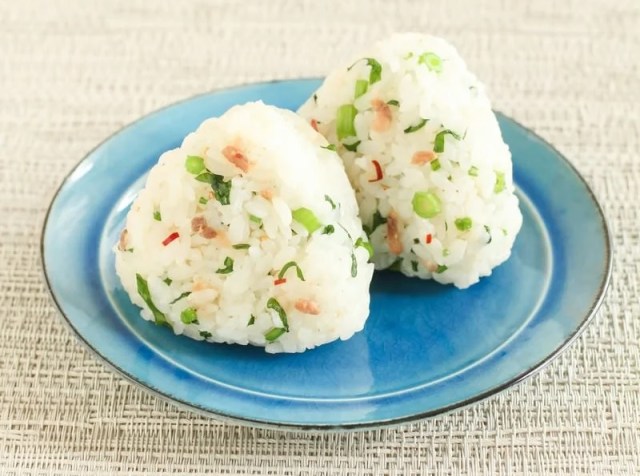
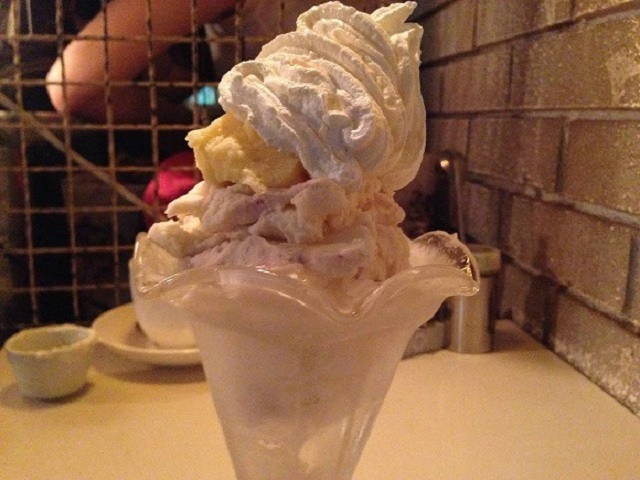

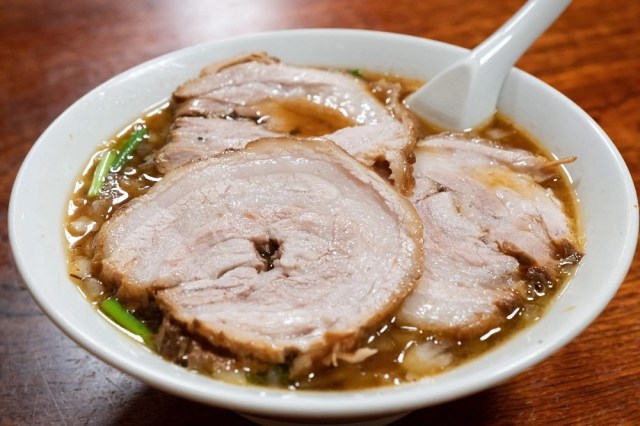
 The top 10 traits of “domestic” women in Japan, according to Japanese men
The top 10 traits of “domestic” women in Japan, according to Japanese men Which Japanese conveyor belt sushi chain has the best mackerel sushi?【Taste test】
Which Japanese conveyor belt sushi chain has the best mackerel sushi?【Taste test】 Drunken dad in Japan steals son’s cream pastry, adorable kid erupts in galactic-level anger
Drunken dad in Japan steals son’s cream pastry, adorable kid erupts in galactic-level anger We tried Japan’s Strawberry Daifuku? liqueur, one of three dessert-themed liqueurs
We tried Japan’s Strawberry Daifuku? liqueur, one of three dessert-themed liqueurs Japanese diners pick their eight favorite types of sushi, create mouthwatering dinner blueprint
Japanese diners pick their eight favorite types of sushi, create mouthwatering dinner blueprint Foreigner’s request for help in Tokyo makes us sad for the state of society
Foreigner’s request for help in Tokyo makes us sad for the state of society Japanese-style accommodation at the new Premium Dormy Inn hotel in Asakusa will blow your mind
Japanese-style accommodation at the new Premium Dormy Inn hotel in Asakusa will blow your mind Seaside scenery, history, and so many desserts on Yokohama’s Akai Kutsu【Japan Loop Buses】
Seaside scenery, history, and so many desserts on Yokohama’s Akai Kutsu【Japan Loop Buses】 Mikado Coffee is a 76-year-old coffee chain with a major celebrity connection
Mikado Coffee is a 76-year-old coffee chain with a major celebrity connection Japanese city loses residents’ personal data, which was on paper being transported on a windy day
Japanese city loses residents’ personal data, which was on paper being transported on a windy day Historical figures get manga makeovers from artists of Spy x Family, My Hero Academia and more
Historical figures get manga makeovers from artists of Spy x Family, My Hero Academia and more Red light district sushi restaurant in Tokyo shows us just how wrong we were about it
Red light district sushi restaurant in Tokyo shows us just how wrong we were about it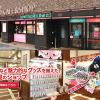 Tokyo’s AKB48 idol-themed cafe announces sudden, permanent closure
Tokyo’s AKB48 idol-themed cafe announces sudden, permanent closure Smash Bros. director Sakurai stabs Kirby in the face, has delicious justification for it
Smash Bros. director Sakurai stabs Kirby in the face, has delicious justification for it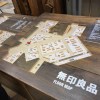 The world’s biggest Muji store opened in Hiroshima, and we went to check it out!
The world’s biggest Muji store opened in Hiroshima, and we went to check it out! McDonald’s new Happy Meals offer up cute and practical Sanrio lifestyle goods
McDonald’s new Happy Meals offer up cute and practical Sanrio lifestyle goods Japanese ramen restaurants under pressure from new yen banknotes
Japanese ramen restaurants under pressure from new yen banknotes French Fries Bread in Tokyo’s Shibuya becomes a hit on social media
French Fries Bread in Tokyo’s Shibuya becomes a hit on social media New private rooms on Tokaido Shinkansen change the way we travel from Tokyo to Kyoto
New private rooms on Tokaido Shinkansen change the way we travel from Tokyo to Kyoto Tokyo Tsukiji fish market site to be redeveloped with 50,000-seat stadium, hotel, shopping center
Tokyo Tsukiji fish market site to be redeveloped with 50,000-seat stadium, hotel, shopping center Beautiful Ghibli sealing wax kits let you create accessories and elegant letter decorations【Pics】
Beautiful Ghibli sealing wax kits let you create accessories and elegant letter decorations【Pics】 Secret Kitchen bento serves Japanese flowers, birds, wind and moon in a box, but is it worth it?
Secret Kitchen bento serves Japanese flowers, birds, wind and moon in a box, but is it worth it? New definition of “Japanese whiskey” goes into effect to prevent fakes from fooling overseas buyers
New definition of “Japanese whiskey” goes into effect to prevent fakes from fooling overseas buyers Our Japanese reporter visits Costco in the U.S., finds super American and very Japanese things
Our Japanese reporter visits Costco in the U.S., finds super American and very Japanese things Studio Ghibli releases Kiki’s Delivery Service chocolate cake pouches in Japan
Studio Ghibli releases Kiki’s Delivery Service chocolate cake pouches in Japan All-you-can-drink Starbucks and amazing views part of Tokyo’s new 170 meter-high sky lounge
All-you-can-drink Starbucks and amazing views part of Tokyo’s new 170 meter-high sky lounge More foreign tourists than ever before in history visited Japan last month
More foreign tourists than ever before in history visited Japan last month New Pokémon cakes let you eat your way through Pikachu and all the Eevee evolutions
New Pokémon cakes let you eat your way through Pikachu and all the Eevee evolutions Disney princesses get official manga makeovers for Manga Princess Cafe opening in Tokyo
Disney princesses get official manga makeovers for Manga Princess Cafe opening in Tokyo Sales of Japan’s most convenient train ticket/shopping payment cards suspended indefinitely
Sales of Japan’s most convenient train ticket/shopping payment cards suspended indefinitely Sold-out Studio Ghibli desktop humidifiers are back so Totoro can help you through the dry season
Sold-out Studio Ghibli desktop humidifiers are back so Totoro can help you through the dry season Japanese government to make first change to romanization spelling rules since the 1950s
Japanese government to make first change to romanization spelling rules since the 1950s Ghibli founders Toshio Suzuki and Hayao Miyazaki contribute to Japanese whisky Totoro label design
Ghibli founders Toshio Suzuki and Hayao Miyazaki contribute to Japanese whisky Totoro label design Doraemon found buried at sea as scene from 1993 anime becomes real life【Photos】
Doraemon found buried at sea as scene from 1993 anime becomes real life【Photos】 Tokyo’s most famous Starbucks is closed
Tokyo’s most famous Starbucks is closed One Piece characters’ nationalities revealed, but fans have mixed opinions
One Piece characters’ nationalities revealed, but fans have mixed opinions We asked a Uniqlo employee what four things we should buy and their suggestions didn’t disappoint
We asked a Uniqlo employee what four things we should buy and their suggestions didn’t disappoint This decommissioned bus on the side of the road in Tochigi serves up some tasty ramen
This decommissioned bus on the side of the road in Tochigi serves up some tasty ramen Best breakfast ramen in southern Japan? Taste-testing Fukuoka’s super-convenient Morning Ramen
Best breakfast ramen in southern Japan? Taste-testing Fukuoka’s super-convenient Morning Ramen Tokyo’s new frozen ramen vending machines are brain-breakingly amazing【Taste test】
Tokyo’s new frozen ramen vending machines are brain-breakingly amazing【Taste test】 Deep-fried ramen croquettes now exist in Japan, and we are all powerless to resist them
Deep-fried ramen croquettes now exist in Japan, and we are all powerless to resist them These two types of chocolate ramen are going to make Valentine’s Day extra-sweet
These two types of chocolate ramen are going to make Valentine’s Day extra-sweet Clever new packaging trick helps make it easier to eat instant ramen without ruining your health
Clever new packaging trick helps make it easier to eat instant ramen without ruining your health Ramen and girls bar: Where you can talk to women who aren’t dressed like hosts or maids
Ramen and girls bar: Where you can talk to women who aren’t dressed like hosts or maids We cooked Japan’s 2,000-yen mail-order Ramen of the Year, but was it worth it?【Taste test】
We cooked Japan’s 2,000-yen mail-order Ramen of the Year, but was it worth it?【Taste test】 Japan super budget dining – What’s the best way to spend 1,000 yen at sushi restaurant Sushiro?
Japan super budget dining – What’s the best way to spend 1,000 yen at sushi restaurant Sushiro? We found a popular Japanese ramen chain in South Korea!…or so we thought
We found a popular Japanese ramen chain in South Korea!…or so we thought Survey ranks the most popular Japanese curry dishes during winter
Survey ranks the most popular Japanese curry dishes during winter This Tokyo ramen is served in -110-degree Fahrenheit container to help you beat the summer heat
This Tokyo ramen is served in -110-degree Fahrenheit container to help you beat the summer heat Is ramen pizza just crazy enough to work? Japanese restaurant’s unusual menu lets us find out
Is ramen pizza just crazy enough to work? Japanese restaurant’s unusual menu lets us find out Yoshinoya beef ramen? Gyudon king’s sister chain opens first Tokyo branch【Taste test】
Yoshinoya beef ramen? Gyudon king’s sister chain opens first Tokyo branch【Taste test】 Tokyo vegan’s ramen recommendation is extremely off the mark
Tokyo vegan’s ramen recommendation is extremely off the mark
Leave a Reply